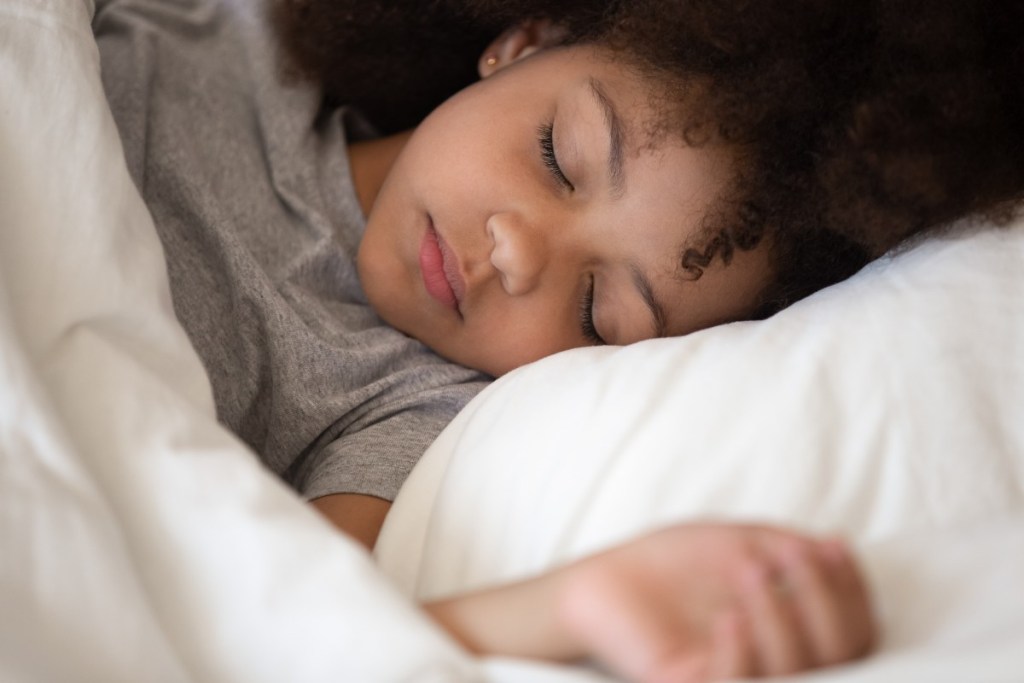Bedtime can be hard enough without dealing with time adjustments, and those early mornings getting up an hour before you hoped? It can all be a pretty unpleasant experience, especially if your child is on a very regular sleep schedule. We have some tips that will help to smooth over the adjustment period so the fall back time change will be a distant memory before you know it.

Move bedtime incrementally
Our best advice is to stagger bedtime time changes over the course of a week. A few days before the change, move bedtime later by 15 or 30 minutes. Some recommend moving it by 10 minutes every 2-3 days over two weeks, but do what feels right for your own child. If your child is young enough not to notice because they can’t read a clock, this will be even easier.
After the change, move the bedtime to the final 30 minutes (now the clock will say you’re moving it earlier instead of later) or keep moving it by 10-15 minutes every other day. Feel free to take anywhere between three days or two weeks to make the full adjustments, though one week is usually what’s recommended. Some kids may be totally fine with the change all at once, but this provides some adjustment for you and them so that waking up way too early (and the crankiness that goes with it) is less likely to happen.
Talk about it
To help kids adjusting to the fall time change, be open and transparent about what is going on. The time change can be disorienting, but you can explain the science of what is going on and teach about sunlight, orbits, clocks, time zones, circadian rhythms, and more. Make sure they know the earlier bedtime isn’t a punishment and that they aren’t really missing out on any daytime.
If your child isn’t doing well with the change, listen to them and validate them. They may be more cranky because something feels different or because they are getting hungry at “wrong” times. Ask them what’s wrong and go from there.
Adjust the whole daily schedule
Plan ahead to recognize your kids will be hungrier earlier than usual for every meal and snack and do what you can to push it all incrementally. Serve breakfast 15 minutes later than usual after wake-up time so that the whole day can follow in a domino effect. The same goes for naps or anything else in your daily routine–adjust by 10-30 minutes every 2-3 days over the course of several days.
Just remember that you’re pushing the times back before the change and forward after the change, even though it’s really all in the same direction. (So confusing!) For example, if bedtime is 7:00 PM, before the change you’ll want to make bedtime 7:15 PM. On the change day, 7:15 PM will become 6:15 PM and you’ll move it to 6:30 PM. To your internal clock, though, that’s 7:30 PM, 30 minutes later than usual. By the end, you’ll have made bedtime 7:00 PM again. Try writing out the whole plan on paper ahead of time to keep it straight.
Move your own schedule, too, along with your kid’s. It’ll be easiest if you know if they are hungry because you’re getting hungry, too.

Stick to a routine
That daily schedule may be being incrementally pushed in timing, but keeping it otherwise the same is more important now than ever. Try not to schedule trips, overnight visitors, or other disruptions during the change. Reinforce a predictable bedtime routine and daily schedule throughout to maintain their sense of order and make the bedtime time change stick within something familiar. They may not even notice the change if their routine stays the same, just fudged by a few minutes at the beginning and end of the day.
Push the playground
Increase your kid’s exercise during the adjustment period so they get tired out during the day to be able to fall asleep earlier at night. Playgrounds, parks, playdates, sports, yard time… Take advantage of running around outside before the weather gets too cold.
Getting outdoors time will also help adjust their biological clock. If they are out in natural sunlight midday, they’ll get the message that this is daytime, reinforcing the correct time.
Don’t stress
Give yourself and your kid some latitude during the change and remember that their crankiness is temporary due to this change. Worrying in anticipation or if it’s not going well doesn’t help anyone, so take it one day at a time. Modeling being calm will help your child stay calm, too.



